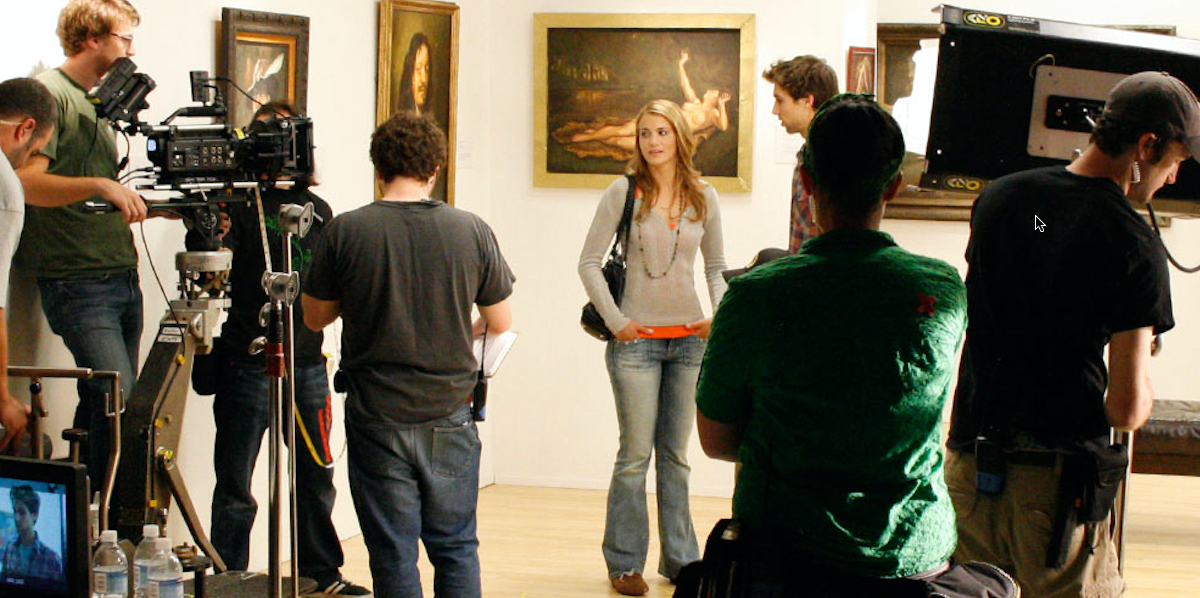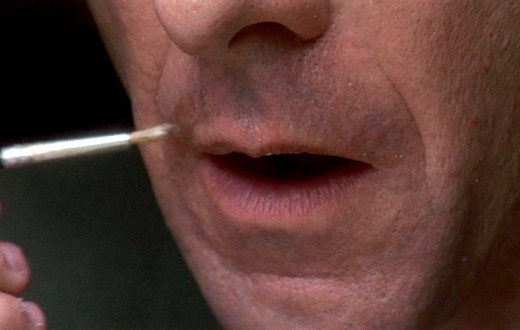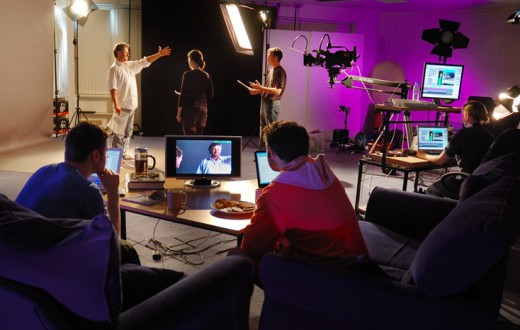In the competitive world of acting, there’s a phrase often heard when someone feels frustrated: “There’s just no roles for me.” Whether it’s due to typecasting, limited opportunities, or a desire for unique roles, this sentiment can feel all too real. But as much as we may sympathize, there’s one critical truth every actor needs to embrace: If the roles you want aren’t out there, it’s time to create them. Remember, success favors bold moves, and stepping outside the traditional path is often where true growth happens.
1. Shift Your Mindset: From Waiting to Creating
Many actors fall into the trap of waiting for “the one” — the role that will skyrocket their career. But what if that perfect role doesn’t come? Or worse, what if it does, but you’ve spent so much time waiting that you’re not fully prepared? Shifting from a passive mindset to an active one is essential. Instead of seeing the industry as something that owes you opportunities, consider it a space where you can carve out your own.
Ask yourself: What stories am I passionate about telling? Use that question to guide you in crafting roles, projects, or stories that resonate with your unique voice.
2. Learn the Basics of Production
Creating your own work is empowering, but it’s not always easy. Learning about screenwriting, directing, and production can go a long way. The good news is that technology has made filmmaking accessible. With your smartphone, you can shoot high-quality footage, and free editing software can help you polish your project.
Familiarizing yourself with these skills not only allows you to create, but it also makes you more versatile and knowledgeable. It’s a way to stand out and show casting directors that you’re someone who takes their craft seriously.
3. Tap into Vertical Dramas for a Big Break
One of the biggest trends in digital entertainment right now is the rise of vertical dramas — short, engaging videos optimized for mobile viewing, often produced in portrait mode. Platforms like TikTok, Instagram Reels, and YouTube Shorts have millions of daily viewers who are constantly on the lookout for fresh, bite-sized content. Creating your own vertical drama can be a powerful way to show off your acting skills and build a following at the same time.
Imagine reaching thousands, even millions, of viewers simply by posting your own mini-dramas. This format is perfect for experimental storytelling, character exploration, and series-style content that keeps audiences coming back. And the best part? You can do it all on your phone, making it an affordable and accessible way to break into the industry.
4. Network with Like-Minded Creatives
There’s power in collaboration. Connecting with other creatives — actors, writers, cinematographers, editors — can open up new doors. Surround yourself with people who share your vision or are eager to bring fresh ideas to life. You may find that others have similar frustrations with the industry and are just as eager to create unique projects.
Online communities, local acting classes, and social media are excellent places to connect. Collaborative projects are also likely to get more attention because they bring together multiple talents and audiences.
5. Share Your Work Confidently
Once you’ve created something, don’t hide it! Share your work on social media platforms, attend local film festivals, and engage with online communities that celebrate indie creators. Building an online presence can be just as important as building an in-person one. You never know who might see your work — it could lead to a collaboration, representation, or even a larger opportunity.
6. Understand the Power of Persistence
Creating your own opportunities isn’t always easy or smooth. You’ll face setbacks, from budget limitations to casting challenges. But remember, each project is a learning experience. If something doesn’t work out as planned, don’t give up. Each time you put yourself out there, you’re gaining skills, building connections, and showing the world that you’re serious about your craft.
7. Embrace Your Uniqueness
The best part about creating your own roles? You’re not limited by anyone else’s vision. You can showcase exactly what you’re capable of, exploring characters and stories that feel authentic to you. Embrace what makes you unique and bring it to the screen. Authenticity resonates with audiences, and by telling stories that come from the heart, you’re more likely to create a lasting impact.
Here’s a list of some hit films that started as small, independent projects or from unconventional beginnings where the creators took bold moves, made their own work, and ultimately gained massive recognition:
1. Paranormal Activity (2007)
- How it Happened: Oren Peli, a software engineer with no prior filmmaking experience, wrote, directed, and produced this supernatural horror on a shoestring budget of $15,000. He shot it in his own home with minimal equipment. The film’s unique found-footage style and genuinely chilling atmosphere caught the attention of festival audiences and eventually caught the eye of Paramount Pictures, which bought the film and released it widely. It became a huge success, launching a profitable horror franchise.
2. Clerks (1994)
- How it Happened: Kevin Smith, then a convenience store worker, maxed out several credit cards and sold his comic book collection to raise $27,000 to shoot this comedy. He filmed it after hours at the convenience store where he worked, using friends and first-time actors. The film’s witty, down-to-earth portrayal of ordinary people resonated with audiences, and it was picked up at the Sundance Film Festival, launching Smith’s career and leading to a cult following.
3. Napoleon Dynamite (2004)
- How it Happened: Jared Hess and his wife Jerusha made a short film, Peluca, that was the precursor to Napoleon Dynamite. After the short gained positive feedback, they expanded it into a feature-length film with a budget of $400,000, partly funded by the short’s success. The quirky, offbeat humor and memorable characters attracted a loyal fanbase, and Napoleon Dynamite went on to gross over $46 million.
4. The Blair Witch Project (1999)
- How it Happened: Using a budget of around $60,000, filmmakers Daniel Myrick and Eduardo Sánchez shot this horror film in a faux-documentary style, giving it a sense of realism that intrigued audiences. They used amateur actors and focused on improvisation to enhance authenticity. Clever marketing through online forums and “found footage” style ads built massive interest, resulting in over $248 million in box office earnings and making it one of the most profitable independent films of all time.
5. Whiplash (2014)
- How it Happened: Damien Chazelle initially made Whiplash as an 18-minute short film, which he submitted to the Sundance Film Festival. The short gained positive attention, leading to funding for a full feature film. With a modest $3.3 million budget, Chazelle turned it into an intense, critically acclaimed drama that won three Academy Awards, including Best Supporting Actor for J.K. Simmons.
6. Little Miss Sunshine (2006)
- How it Happened: Screenwriter Michael Arndt wrote Little Miss Sunshine while struggling as an unknown writer. It was picked up by producers with limited funds and made on an $8 million budget, which is modest by Hollywood standards. Despite its small scale, the film’s heartfelt, quirky story resonated with audiences and critics alike, grossing over $100 million worldwide and winning two Academy Awards.
7. Primer (2004)
- How it Happened: Shane Carruth, a former software engineer with no prior filmmaking experience, wrote, directed, produced, edited, and scored Primer on a budget of just $7,000. The film’s complex time-travel plot and grounded, indie style captivated science fiction fans, and it won the Grand Jury Prize at Sundance, becoming a cult classic and a symbol of what can be achieved with minimal resources and a great idea.
8. El Mariachi (1992)
- How it Happened: Robert Rodriguez famously made El Mariachi for only $7,000, which he raised by volunteering for medical experiments. Rodriguez wrote, directed, and shot the film himself, using non-professional actors and a borrowed camera. The film caught the attention of Columbia Pictures, who released it to wider audiences. Rodriguez’s bold move to make an action film on such a low budget ultimately launched his career as a filmmaker.
9. Saw (2004)
- How it Happened: James Wan and Leigh Whannell, two aspiring filmmakers, couldn’t afford to make the entire film at first. They created a short scene from the script to showcase the film’s potential and shopped it around. This approach led to a modest $1.2 million budget, and Saw went on to gross over $100 million and launch a major horror franchise.
10. My Big Fat Greek Wedding (2002)
- How it Happened: Nia Vardalos originally wrote My Big Fat Greek Wedding as a one-woman stage show about her experiences growing up in a Greek family. Her performance was noticed by Rita Wilson and Tom Hanks, who saw its potential and helped her turn it into a feature film. With a budget of just $5 million, the movie became a box office sensation, grossing over $368 million worldwide.
Final Thoughts: Success Favors Bold Moves
Actors who succeed in today’s industry aren’t necessarily the ones who wait for the perfect role; they’re the ones who seize their own destiny. Bold moves — whether it’s starting your own project, collaborating with others, or diving into vertical dramas — demonstrate ambition, resilience, and a commitment to growth. And with the explosive popularity of vertical dramas, you don’t have to wait for someone else to give you the spotlight. Creating your own work isn’t just a fallback plan — it’s a powerful way to take control of your career, showcase your skills, and introduce yourself to a world of potential fans.
So, if you feel like the roles you want aren’t out there, remember: The power to create is in your hands. Stop waiting, start filming, and let the world see what you’re made of. Success, after all, favors the bold.







